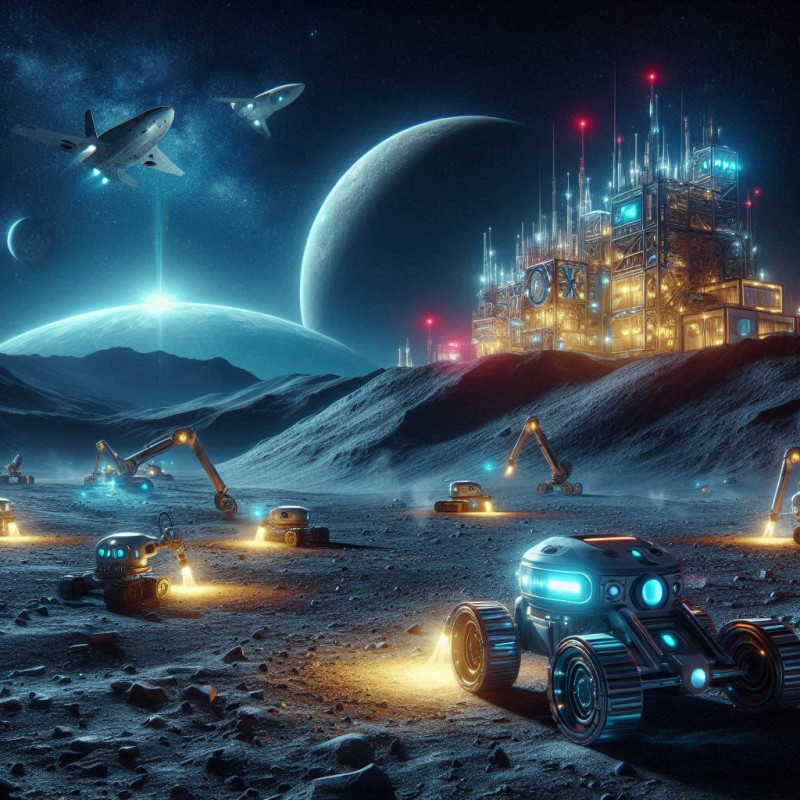In 1969, humanity took its first steps on the Moon. In 2024, we’re not just revisiting—we’re moving in. Private companies, backed by billionaires and fueled by cutting-edge tech, are racing to mine resources on the Moon, Mars, and asteroids. At NewsBuddy.website, we explore how this cosmic gold rush could reshape economies, geopolitics, and life on Earth.
Why Space Mining? The Trillion-Dollar Opportunity
-
Lunar water: Ice trapped in Moon craters can be split into hydrogen (fuel) and oxygen (life support), slashing costs for deep-space missions.
-
Asteroid metals: A single platinum-rich asteroid could be worth $50 billion (NASA estimate).
-
Helium-3: Rare on Earth, this isotope could power futuristic nuclear fusion reactors.
Key Players:
-
AstroForge: Launched the first asteroid prospecting mission in 2023.
-
Blue Origin: Building a lunar lander to extract water by 2026.
-
China: Plans a Moon base by 2030, igniting a new "Space Cold War."
The Tech Making It Possible
-
AI-Powered Rovers: Robots like NASA’s VIPER use machine learning to map resource-rich zones.
-
3D Printing Habitats: Startups like ICON are testing lunar concrete printers to build bases.
-
Space Solar Farms: Japan’s JAXA aims to beam solar energy from orbit by 2030.
Quote:
“This isn’t just about profit—it’s about ensuring humanity’s survival. Earth’s resources won’t last forever.”
—Dr. Emily Zhang, AstroForge Chief Scientist
The Legal Black Hole: Who Owns Space?
-
Outer Space Treaty (1967): Bans nations from claiming celestial bodies but says nothing about corporations.
-
Luxembourg Loophole: The country grants private firms rights to resources they extract, attracting firms like Planetary Resources.
-
Ethical Debates: Critics warn of “space colonialism” and environmental damage to pristine worlds.
Earthly Impacts: Winners and Losers
-
Boom Industries: Robotics, renewable energy, and materials science.
-
At Risk: Terrestrial mining sectors (e.g., cobalt, rare earth metals).
-
Geopolitical Tensions: The U.S., China, and UAE are vying for lunar real estate.
Stat: The global space economy could hit $1.8 trillion by 2035 (Morgan Stanley).
What’s Next? The Road to 2030
-
Moon Marketplace: SpaceX’s Starship aims to ferry equipment and crews by 2025.
-
Mars Prototypes: Elon Musk’s “self-sustaining city” plans face radiation and food challenges.
-
Public Backlash: Protests against “corporate space grabs” are rising globally.
Space mining promises a future of limitless energy and interplanetary colonies—but at what cost? As corporations and nations sprint to stake their claims, the line between innovation and exploitation grows thinner. At NewsBuddy.website, we’ll keep you grounded with unbiased coverage of humanity’s next giant leap.



